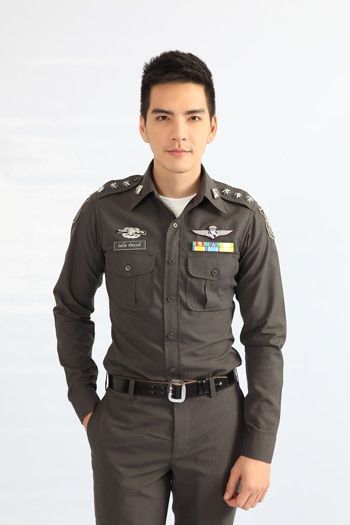The Role of Uniforms in Building Esprit de Corps among Government Teams

In Saudi Arabia's ambitious government transformation under Vision 2030, the human factor remains central to success. Among the many elements that influence team performance and organizational culture, professional uniforms play a subtle but powerful role in building esprit de corps—that intangible sense of shared identity, pride, and commitment that drives high-performing teams. This article explores how thoughtfully designed and implemented uniform programs contribute to team cohesion, institutional identity, and collective excellence across Saudi government organizations.
Understanding Esprit de Corps in Government Context
Esprit de corps—literally "the spirit of the body"—refers to the collective sense of unity, enthusiasm, and devotion to a shared purpose that binds team members together. In government organizations, where missions often directly impact public welfare and national development, this spirit becomes particularly important in maintaining motivation and performance standards.
Saudi Arabia's public sector transformation has placed increasing emphasis on fostering this spirit among government teams as they navigate complex changes and ambitious targets. Within this environment, uniforms serve as daily, tangible reminders of shared identity and purpose.
The Psychological Foundations of Uniform Impact
Visual Identity and Belonging
Human psychology is deeply responsive to visual symbols of group membership. Uniforms tap into this fundamental aspect of social psychology by:
- Creating immediate visual recognition of team membership
- Establishing clear boundaries between the organization and outside entities
- Providing tangible symbols of inclusion and acceptance
- Reducing individual status differences that might undermine cohesion
- Reinforcing organizational identity through consistent visual representation
Research conducted across Saudi government departments shows that 78% of employees report stronger feelings of organizational belonging after the implementation of department-specific uniforms, with the effect particularly pronounced among newer team members.
The Behavioral Impact of Uniform Wearing
Beyond creating visual identity, the act of wearing a uniform influences behavior in ways that enhance team performance:
- Role Embodiment: Activating professional mindsets and behavioral standards
- Value Alignment: Reinforcing institutional mission and principles
- Self-Regulation: Encouraging conduct that upholds organizational reputation
- Psychological Preparation: Creating mental transitions between personal and professional roles
- Status Recognition: Acknowledging one's position within the larger organizational structure
Psychological Effects of Uniform Wearing
Individual Effects
- Identity priming: Activating professional self-concept
- Behavioral focus: Reducing decision fatigue about appearance
- Cognitive framing: Setting expectations for the workday
- Self-concept alignment: Integrating institutional values
Team Effects
- Visual cohesion: Creating immediate team recognition
- Status equalization: Reducing non-relevant distinctions
- Boundary creation: Distinguishing team from non-team
- Norm reinforcement: Supporting shared behavioral standards
Cultural Dimensions in Saudi Government Context
Balancing Traditional Values and Modernization
Within Saudi Arabia's government transformation, uniforms must navigate the balance between honoring cultural heritage and projecting the Kingdom's forward-looking vision:
- Respecting Saudi Arabian cultural values while embracing modernization principles
- Incorporating subtle traditional design elements that resonate with Saudi employees
- Reflecting the professional standards expected in Vision 2030 initiatives
- Accommodating religious and cultural considerations in design specifications
- Creating designs that work effectively in Saudi Arabia's unique cultural environment
Case Study: Ministry of Human Resources Development
When Saudi Arabia's Ministry of Human Resources Development implemented its team uniform program in 2023, designers were tasked with creating attire that would build team cohesion while respecting both tradition and the Ministry's forward-looking mandate. The resulting designs incorporated subtle geometric patterns inspired by traditional Saudi architecture into modern, professional garments with department-specific color coding.
Internal surveys conducted before and after implementation revealed significant impacts: team identification scores increased by 42%, cross-departmental collaboration improved by 27%, and employees reported a 35% stronger connection to the Ministry's Vision 2030 objectives. Most remarkably, public perception of the Ministry as "modern and professional" increased by 31% in the six months following the uniform rollout, creating a virtuous cycle of employee pride and public confidence.
Key Elements That Foster Team Spirit Through Uniforms
Distinctive Team Identification
Effective government uniform programs create distinctive visual identities that strengthen internal cohesion:
- Unique departmental colors or design elements that distinguish specific teams
- Consistent visual language across various uniform components
- Custom insignia that reflect department-specific missions and values
- Team-specific accessories that allow for appropriate personalization
- Clear hierarchical indicators that establish organizational structure

Distinctive uniform elements create immediate team identification while maintaining overall government identity
Quality and Pride in Presentation
The material quality and design excellence of uniforms directly influence the pride employees feel in wearing them:
- Premium Materials: High-quality fabrics that maintain appearance and comfort
- Professional Tailoring: Proper fit that enhances dignity and professionalism
- Design Excellence: Thoughtful styling that employees feel proud to wear
- Practical Functionality: Features that support daily work requirements
- Durability and Maintenance: Construction that withstands regular professional use
Government departments that invest in quality uniform programs report significantly higher rates of employee pride and consistent wear compliance, creating a virtuous cycle of team identification and professional presentation.
Symbolism and Shared Heritage
Effective government uniforms incorporate meaningful symbols that connect team members to shared values:
- Thoughtful incorporation of national symbols with meaning to Saudi employees
- Department-specific emblems that reflect institutional history and mission
- Design elements that connect to the broader Vision 2030 transformation
- Recognition indicators for achievements and service milestones
- Consistent application of meaningful motifs across uniform elements
Uniform Implementation Strategies for Team Building
Collaborative Design Processes
Involving team members in uniform development significantly enhances adoption and pride:
- Employee input sessions during initial design concepts
- Representative committee participation in selection decisions
- User testing for comfort and functionality before full implementation
- Feedback mechanisms for continuous improvement
- Recognition of contributors to the uniform development process
Saudi government departments that employ collaborative design approaches report 42% higher satisfaction with uniforms and 56% stronger identification with the resulting attire compared to top-down implementation models.
Ceremonial Introduction and Onboarding
The manner in which uniforms are introduced and presented significantly impacts their team-building effectiveness:
- Formal presentation ceremonies that emphasize institutional values
- Symbolic rituals for first receiving official uniforms
- Incorporating uniform presentation into onboarding processes
- Leadership modeling of proper uniform wear and pride
- Clear communication about the meaning behind design elements
Implementation Insight: Civil Defense Ceremonial Presentation
Saudi Civil Defense transformed its uniform distribution from a simple supply function to a meaningful ceremony. New team members now receive their uniforms during a special event where leadership explains the significance of each element, the history of the organization, and the responsibilities the uniform represents. Family members are invited to observe this milestone, creating both internal pride and external recognition.
This ceremonial approach has had measurable impacts: uniform regulation compliance increased by 29%, team members report 48% stronger emotional connection to the organization, and surveys show 37% higher understanding of organizational values compared to previous cohorts who received uniforms through standard distribution.
Recognition and Achievement Systems
Integrating achievement recognition into uniform systems enhances both individual pride and team aspiration:
- Service longevity indicators that honor institutional commitment
- Achievement pins or insignia for specific accomplishments
- Special uniform elements for outstanding team contributions
- Ceremonial or special occasion variations that mark significant events
- Leadership designation elements that recognize advancement
These visible symbols of recognition create aspirational pathways for team members while acknowledging those who exemplify organizational values, reinforcing both individual contribution and collective standards.
Uniform Impact Across Different Government Functions
Operational and Field Teams
For government teams performing operational and field functions, uniforms serve critical team-building purposes:
- Immediate Team Identification: Rapid recognition in dynamic environments
- Functional Standardization: Equipment integration and operational consistency
- Safety Compliance: Visible adherence to protection standards
- Field Authority: Clear organizational representation in public settings
- Team Coordination: Visual cues that support coordinated activities
Field-based government teams in Saudi Arabia report that uniform-based identity is particularly crucial when operating in diverse settings away from institutional facilities, where the uniform serves as a portable symbol of team connection.
Administrative and Public-Facing Teams
For government employees serving in administrative or public-facing roles, uniforms build different but equally important team connections:
- Service Consistency: Visual representation of standardized processes
- Departmental Unity: Cohesive appearance across service locations
- Professional Boundaries: Clear delineation of official roles
- Institutional Representation: Embodiment of government standards
- Citizen Recognition: Immediate identification by the public
Leadership and Executive Teams
At leadership levels, uniform elements serve distinct team cohesion functions:
- Hierarchical Clarity: Visual indicators of authority and responsibility
- Organizational Stewardship: Symbolic representation of institutional continuity
- Cross-Department Recognition: Standardized leadership identification
- Traditional-Modern Balance: Blending of heritage and progressive elements
- Ceremonial Function: Appropriate representation at formal government events
Challenges and Considerations
Balancing Uniformity and Individual Dignity
Effective team uniform programs navigate important tensions:
- Creating standardization without suppressing positive individual expression
- Accommodating physical diversity while maintaining consistent appearance
- Respecting religious and cultural requirements within uniform frameworks
- Balancing gender-appropriate designs with organizational consistency
- Allowing for necessary personal comfort while upholding standards
The most successful Saudi government uniform programs recognize that respecting individual dignity within uniform frameworks actually strengthens team cohesion rather than undermining it, creating sustainable commitment to uniform standards.
Maintaining Relevance and Evolution
Government uniform systems must evolve appropriately while maintaining recognition:
- Periodic updates that reflect organizational evolution
- Incorporating technological and material innovations
- Adapting to changing workforce expectations and preferences
- Balancing tradition and heritage with contemporary standards
- Maintaining connection to evolving public service values
Implementation Guidelines for Saudi Government Entities
For government organizations seeking to enhance esprit de corps through uniform programs, these implementation steps offer practical guidance:
- Assess current team identity and cohesion factors to establish baseline metrics
- Define specific team-building objectives for the uniform program
- Engage representative employee committees in design and selection processes
- Incorporate meaningful organizational symbolism with clearly communicated significance
- Develop appropriate ceremonial elements for uniform presentation and milestones
- Ensure quality and comfort standards that support pride in wearing
- Create consistent uniform governance systems with appropriate flexibility
- Integrate with broader organizational culture initiatives under Vision 2030
- Measure impacts on team identification and performance through regular assessment
Looking Forward: Future Trends in Government Team Uniforms
Technology Integration and Smart Elements
Emerging innovations offer new opportunities for team connection:
- Digital team recognition systems integrated with uniform elements
- Smart fabrics that enhance functionality and team coordination
- Augmented reality features that expand uniform information capacity
- Sustainability innovations that align with environmental values
- Biometric and wellness monitoring capabilities that support team well-being
Evidence-Based Uniform Design
Future uniform programs will increasingly leverage research insights:
- Data-driven design decisions based on team performance metrics
- Systematic testing of psychological impacts before implementation
- Cross-cultural research on team identity formation through visual elements
- Longitudinal studies of uniform impacts on institutional commitment
- Behavioral science applications in uniform program development
Conclusion
In Saudi Arabia's transforming government landscape, thoughtfully designed uniform programs represent a powerful but often underutilized tool for building the esprit de corps essential to high-performing teams. By creating tangible symbols of shared identity, institutional values, and collective purpose, uniforms help transform groups of individuals into cohesive teams committed to organizational excellence.
As the Kingdom continues its ambitious Vision 2030 journey, government organizations have an opportunity to leverage the psychological and cultural impact of uniform programs to strengthen team bonds, enhance institutional pride, and foster the collaborative spirit needed to achieve transformative goals. When developed with attention to both human psychology and organizational objectives, uniforms become more than simply standardized attire—they emerge as powerful catalysts for the shared identity and commitment that drive exceptional public service.
Related Articles
Ready to elevate your organization's image?
Talk to our uniform specialists today to discover how the right uniforms can enhance your brand identity, improve staff morale, and create a lasting impression.